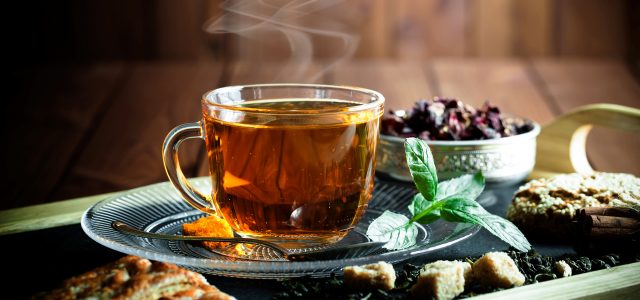
TIME FOR TEA…
With National Tea Day being celebrated this month what’s ‘hot’ right now when it comes to tea, asks expert Kim Havelaar
Tea has come a long way in recent years. Unusual tea combinations are becoming mainstream and offer so much choice. But what are the big tea trends on National Tea Day and beyond?
Quality
Hot drinks, generally, continue to become more premium. In tea, this translates to blends made with whole leaves, as well as the inclusion of many other high-quality ingredients such as real cacao, freeze-dried fruits and whole spices.
Sustainability
About 96 per cent of teabags currently still contain polypropylene, a synthetic resin, which is added during the sealing process. High-quality, 100 per cent biodegradable pyramid teabags have entered the market and the pressure is now on the large tea companies to go plastic-free.
Healthy living
The high level of antioxidants found in – especially – green tea is driving up its popularity. Naturally caffeine-free herbal infusions containing ingredients with additional health benefits are also seeing a rise in demand, for example turmeric and rooibos.
Food and tea pairings
Restaurants and bars are seeing a significant and increasing demand for alcohol-free drinks. Tea has a fantastic ability to complement food dishes. More restaurants now offer a tea and food pairing menu alongside wine pairing.
HOW TO MAKE A GREAT CUP OF TEA
When making a great cup of tea, here’s what to watch out for:
The quality of the tea
Several elements impact the quality of your tea, including the growing environment, the manufacturing method and the age of the leaf. But the main rule of thumb is the bigger the leaf, the better the quality of the tea. The whole leaf tea you can see in transparent teabags or in loose leaf tea blends is of better quality than small particles.
Brewing method
When brewing tea, you want to make sure the leaf has enough room to unfurl and infuse the water properly. Brew loose leaf in a large infuser, or use teabags in a pyramid shape, specifically designed to mimic loose leaf brewing without the mess.
The quality of the water
Tea, in essence, is infused water, so it’s unsurprising that the quality of the water matters. Unless you live in an area with extremely pure tap water, filtered water is best. Also, use fresh water every time you boil the kettle.
Water temperature
Different types of tea require different types of temperature. Black tea and herbal teas are just off boiling point. Oolong, green and white teas are more delicate and require cooler temperatures. An easy-to-remember rule is black and herbal at 100˚C and all others at 80˚C. You could get a temperature-controlled kettle or add cold water before pouring in the boiled water.
Kim Havelaar is an accredited tea sommelier and the founder of Roqberry, a new brand of tea, focused on bringing big flavour to tea. With high quality ingredients, hand blended in the UK, Roqberry offers unique flavoured blends as well as top quality artisan varieties. Flavours include fresh expressions of classic blends, such as smooth and sunny Citrus Grey, as well as extraordinary new fusions like savoury Sushi & Spice.

